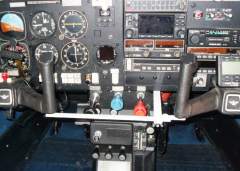Leaderboard
Popular Content
Showing content with the highest reputation on 03/17/2015 in all areas
-
I present to you the new and improved N1162G. I've had her one year now and have finally completed the upgrades I wanted to accomplish. Out of the one year of ownership she's been to Lasar, Flight-Deck Avionics and Master Aircraft Services for a total of 4-5 months. I'm now looking forward to a spring and summer full of trips to see family. CREDITS: Brett - Thank you for the care you took with your ownership of 62G. LASAR - You know who they are. Flight Deck Avionics - Excellent job intalling Aspen PFD, Garmin GTN-750, GDL-88, Backup AI and all to other bells and whistles. Based out of SLC Utah - Contact Jim at 801-673-2076 Master Aircraft Services - Can't be happier with the paint. They stripped off two previous paint jobs before applying the new look. Based out of the Phoenix area - Contact Gus at 928-684-49264 points
-
Exactly! At high altitude and/or cruise power settings it does nothing for you. Fortunately it works best down low at approach settings. If you have to go missed you can say goodbye to your vacuum until you are able to reduce power again. I've never used mine in actual IMC but I had a vacuum pump fail while VFR and it was a useful experience to see how it behaved at various power settings. If I ever have to use it on an instrument approach I will advise ATC in advance and request a nonstandard missed procedure with a straight-ahead climb.1 point
-
I have the rings in a little bag in the back. In their place I put in a couple plastic screws I got at Home Depot to keep holes clean. Did somebody say anal?!1 point
-
1 point
-
1 point
-
I ended up going with Custom III on the main. After asking some questions here, I think I'm going to go with the Flight Special II for the nose since it shouldn't take as much abuse as the mains. Fantom said something about clearance issues with Customs on the nose, so that was another reason to go with the Special.1 point
-
A sticky valve update...and important follow-up information that I was just made privy too... So, it's been 85 flight hours since my first bout with the sticky valve and everything ran along just perfectly since then until about two weeks ago when I had those same indications again one cold morning...shucks! Now what? Well, it was approaching annual time, so I informed my shop of my sticky valve history from 85 hours ago and the current indications and asked for advice. They contacted their engine guy who immediately thought it was an exhaust valve guide diameter issue as he has seen this before (as have I, said I). The engine guy found cylinder 1 had a sticky exhaust valve and this, he said, was the source of my latest sticky valve indications. He reamed it IAW the Lycoming SB. Cylinder 2 was the one that gave me issues 85 hours ago and it was of the proper size as he checked that one too. In addition, he checked cylinders 3 & 4. So, although I have not been able to run it yet (as it's in the middle of its annual), the engine guy says with confidence that my problems are now fixed. Sigh of relief from me! If you're having sticky valve indications, I would like to suggest that you have your valve guide dimensions checked and ensure they are of the proper size for your specific engine.1 point
-
No, keep it simple, link it to the step retraction mechanism... B)1 point
-
1 point
-
-a- I wasn't insulted. Sorry if my reply suggested that. I'm often very direct with my questions and I forget that some may read it with tone that was not intended. I seem to recall you are chemical engineer. You must have had to deal with chemists and our lack of social skills.1 point
-
1986 M20K 252 Rocket I usually fly between 10,000' and FL180. Fanatically keep the temps below 380. I plan on 20 gallons for the first hour and 15 for each additional hour. With 100 gallons usable and a conservative fuel reserve, she is an honest 5 hour, 1,000 NM airplane. Short trips < 250 NM I'm averaging 178 kts chocks to chocks and 17.7 GPH average for the entire flight. Rockets are thirsty down low and while climbing. I climb at the best rate where I can keep the #3 cylinder under 380. On a standard day that gives me 1,500 FPM at 120-130 kts. 1,000 FPM @ 140 kts when it's hot outside. Weight doesn't really seem to matter very much. Long trips are where she really shines; a recent trip from central Florida to Chicago was 946 miles direct, 4:24 up and 4:13 home. Total burn for the round trip was 141.8 gallons, 16.49 GPH and 220 kts. average. Yes, I had a little tailwind. Real world: 12,000' 182 kts @ 14.2 GPH / 194 kts @ 16.4 GPH / 198 kts @ 18.3 GPH 18,000' 196 kts @ 15.3 GPH / 200 kts @ 15.7 GPH The 252 is certified to fly at FL280 but i don't think the reward is worth the risk. Maybe with a second pilot on board. Yes, I always fly with a pulse oximeter and a few cans of backup O2, I had one ride in an altitude chamber 17 years ago that made an impact on me. I doubt my lungs have become more efficient since then. I owned a J model ten years ago; she was a fantastic airplane. The Rocket is the right choice for my mission now: usually solo, often long legs, solid IFR traveling machine. I truly can't imagine a better personal traveling machine... unless it was pressurized and pushed along by two engines built by Pratt & Whitney :-)1 point
-
Pacific Continental Engines did my cylinders. They might have some in stock. Chris P. runs the shop. Good family shop history. They purchase overseas engines where their countries have mandatory low time overhauls. I've mentioned it before here, but in Japan they have a mandatory 800hr retirement on some of their piston engines. I grabbed 4 cylinders off one of these 800hr engines. Sure better thank the 3900hr cylinders I was looking to overhaul. By the way- I scrapped all 4 old cores for everyone's sake... Cheers, -Matt1 point
-
1 point
-
My gear indicators are very simple to interpret. Gear Down: green light on panel, green rectangle showing through floor window with "GEAR DOWN" in white. Gear Up: orange light on panel, red rectangle showing through floor window with "GEAR UP" in white. Gear In Transit: orange panel light blinking, red & white barber pole showing through floor window. I've never watched the floor indicator during gear transit (I'm kinda busy at those times), but saw the barber pole when my right wheel wouldn't fully retract one winter. New pucks stopped that, and gave me back 10-12 mph in cruise. Not sure what makes the floor indicator work, guess I could rummage around the Maintenance Manual on my computer. P.S. for Anthony--my gear thumps moving in both directions. Both are satisfying, as I KNOW where the gear is without checking anything. No thump means they didn't move . . . which could be troubling. Even when I had total electrical failure, though, the green floor indicator still worked. I always confirm the green light after dropping gear and on base, and check the light and the floor on final, every time.1 point
-
I just look out the window. they are up. they are down. they are in the middle...1 point
-
Tommy- Please get the help of a competent A&P to do this job. It is classified as "maintenance" and not "preventive maintenance" that an owner/PP is allowed to do. It does need to be signed off in the log book also by an A&P.1 point
-
I did mine in the best leather at a fraction of the cost. Check out my gallery.1 point
-
A good mechanic is worth his wait in gold. Don't complain about his shop rate. Pay it gladly. Going cheap will cost you way more in the long run. I'm sure I could find someone cheaper(you always can) but have NO intention of taking my airplane anywhere else but it's current MSC.1 point
-
I should be more diligent with the search function. Thanks for the link Marauder and particularly your pictures. Very helpful. Victor1 point
-
1 point
-
Not really. The extra power is restricted to non-continuous operation. I think it requires a new prop plus replacement cylinders are double the price in the future. -Robert1 point
-
Depends on how your A&P reads the regs. I would read it as a minor alteration so just a logbook entry. If you intend to REPLACE your vacuum indicator light with the vacuum gauge, THAT would be a very different matter, and I would want to go with a 337 as a major alteration, and probably need a field approval signature to boot. Weight and balance change is probably negligible, depending on how much the gauge and associated tubing weighs. Even so, the logbook entry should state that.1 point
-
The lighter was already gone when I bought my plane. My ashtray is now on the hangar shelf, and a useful ash light is in its place. Oil and tools are in a Rubbermaid box in the back. Tie down rings live on the bottom of both wings, I occasionally check that they're tight.1 point
-
1 point
-
I don't have any dogs in this fight, er, discussion, but have two thoughts. First, I am one of those pilots who, if I could not get on top and had to do two hours in the clag, probably would not go. Its not that I can't fly in the stuff and don't have the time or ratings to do it, and it is not the clag that bothers me. It is the turbulence that invariably is in the clag that I don't like. Ugh. I would not go if I did not have to. In any event, being turbo'd, I can get on top 98% of the time. I have very few Actual time entries that are not drips and drabs, ascending or descending through the clag. The other is VFR into IMC, and don't get me wrong I am not recommending that any nonIFR pilots just fly off into the clouds. But I have inadvertently blundered VFR into IMC a couple of times, they were completely noneventful (I have to say I am and was then instrument rated) so long as you just fly the airplane and figure a route out of it as soon as you can. The AP helps alot, because it does not have a clue that it is in the clag or whether it has busted any regs, it just flies the damn airplane! Unerringly. I am afraid that what gets alot of people is the regulatory fear, they are now where the rules say they should not be, OMG!! The first priority, as always, is to just fly the aircraft and not panic. That is what our training as pilots is all about. Ask for help if you need it, ATC will always provide it and they will be completely nonjudgmental. We would rather have you safe on the ground and worry with you later about the consequences, which in an inadvertent situation are not at all likely, than having literally died of worry.1 point
-
1 point
-
That's the preferred solution but it's a grand extra for 4 of the larger size ones.1 point
-
Nice Matt, and thanks for including this. A reasonable rewrite of 23, allowing tinkering like this on our airplanes with less red tape could breathe lots of life back into the stock Mooney fleet! It's what I appreciate most about the experimental world. Patrick1 point
-
I love being told I shouldn't own an airplane on an Internet forum by someone I don't know. I got the same reaction on the corvette forum when I bought my new Vette and the leather seat creased day one in the way home from the dealer.1 point
-
Chris, I'm at the hangar right now. I turned on the master, pulled the breaker and pushed it back in...the gauges came to life! Thanks1 point
-
My wife got one of those vinyl printers... I think the first thing I am going to make is Red "Danger Jet Blast" for the stall vane and yellow and black "Rescue" arrows for the Starboard side1 point
-
So much good advice. 1. Congratulations, bon voyage on the next twenty- plus year ride. 2. a J has plenty of room for a family of 3, or even 4, minus the doggies. The dogs of GA travelers I know seem to love going to puppy camp, much better than strange places, being cooped up, needy, and sometimes unwelcome. Just look around for a good one, or hire a neighbor to come dote on them at home. 3. As in 3 cheers for baby carriers. I owned a stroller, but rarely took it anywhere, as papoosing was definitely the way to go when they were tiny. They were happier as toddlers up high with a view in a frame carrier, patting mom on the head, than they were stuffed in a stroller. By the time they were mobile, we endured the scornful gazes of disapproval when we were in crowded places, and used toddler leashes. Saved all sorts of panic, and granted them a tiny sense of autonomy. 4. Packing light is so freeing. Any hotel has a place to bed the baby, so lose the pack'n'play. Don't laugh, but a new baby is perfectly fine in a blanket-lined bureau drawer. Our toddlers wanted to either snuggle with us or "camp out" on the floor cocooned in a spare blanket. they're quite flexible. The less cargo you have, the easier and more carefree travel becomes. Seriously. No need to dress fancy or take a lot of just-in-case stuff. You just then have to pack it, haul it, fit it in, take it out, haul it, unpack it, repack it, haul it, fit it in, rinse, repeat. 5. Babies usually sleep peacefully while flying. Nursing on ascent and descent makes ear blocks much less of an issue. 6. The smartest world traveler I know, now in her mid-90s, says "all I need is my passport and my credit card." She vagabonds for months at a time, still, with a roll-aboard suitcase.That thought goes for families, too. You will rarely be more than half a block from a place to replenish your supply of diapers, wet-wipes, and other necessities.1 point
-
Scott, First congratulations. I have 3 children and 7 grandchildren. The children were grown by the time I had much GA opportunity. Now my grandchildren are another story, they collectively have flown hundreds of hours with me. I have flown them with me in my 6 seat Saratoga with AC and now my Rocket as you can see in the images attached. My grandson Dawsen has flown with me for over 10 years since about 18 months of age and my youngest granddaughter since she was about 3 months old, now 2 years old. I have had the gambit of almost anything I can think of including spilled foods, diaper changes and only one throw up! I also take our highly trained in personal protection & obedient Doberman along frequently and have had the gambit with the dog as well. I will share a few things I can think of that I hope helps Altitude is something to carefully consider for pets and children (one of my Mooney friends a Anesthesiologist specializing in children who is on MS, gave me an elephant O2 mask for children which I have hooked up to my O2 system, we make a game out of it and now frequently use when having to fly anything above 8k for any length of time which is almost always in my world, I have an oximeter and use it on the children as well, either finger for older or toe for younger). I never fly higher than 11k with the dog. Change of altitude particularly descending seems to be the biggest issue (I limit my decent to an agonizing 200 or max 300' max with young children, often need to advise ATC that I need a shallow decent, they have never given me any trouble.... just seems to take forever!) The older the children the faster we descend, especially when they learn to equalize their ear by holding their nose and blowing frequently. Taking off is also something we found that we needed to work them into. I take each of the children for short rides to get them use to take off and landing... some of these short flights have been more than a little interesting. Biggest thing I have found is go easy on first few flights, shallow accent and descents but especially accents on first flights then I pay more attention to my descents from the high altitudes! The first several takeoffs seems to get everyone of them.... Space & weight is just something you learn to work around if possible and sometimes is just something that you cant work around. For example I make all the children ride in a car seat or car booster chair until they are of size (I don't care about age) where the seat belt should protect them. I give them all headsets and things to play with during the flight and talk to them during the flight. When they are very young my wife rides in the back seat next to the car seat to keep them company. We keep ALL the necessary resources readily available when we fly with children (wipees, diapers, diaper bags, drinks, snacks, pee bottles, towels, toys, O2 Mask...) sounds like a lot but we would not trade the time and experiences we have had with them in the airplane for anything! With 3 of my grandchildren living more than 8 hrs by car and 2 hrs in our plane, the plane has afforded us precious time with them that otherwise could not have occurred. We have taken GA trips with our grandchildren to Yellowstone Park, Montana, Wyoming, NM, Colorado, all parts of Texas, Oklahoma and more! This year Dawsen has asked if he could go with me to Oshkosh!! I hope you get the opportunity to share and enjoy the benefits and challenges of GA with your family as I have with mine! When my youngest granddaughter of less than 2 years sees or hears an airplane she says Papa Airplane... Papa Airplane.. Priceless!1 point
-
José, I'm not sure about the market for this machine but I'm not looking for profit on this. I'm just making it for personal use and to help out some friends along the way. When it comes to charging people for using some of my abilities I really suck at it because I end up doing everything for free. Maybe when I retire in a few years I will have no choice but to make a profit on some things but for now I would rather build good friendships along the way I'm posted the pics because I would like to collect ideas from the great wealth of knowledge in this forum and test out the product so that I can help anyone else out if they are interested in doing the same. After all, what I love about owning a Mooney the most is having you fellow mooniacs so willing to help each other out. Not only because most of us form a part of the cheap bastard club, but many of us don't have deep pockets like most non owners believe, just because you own a small aircraft Heck, some sports cars are way more expensive to own than some amazing mooneys.1 point
-
1 point
-
Nobody mentioned the best feature of the KX165 - it's digital display of which radial you are on. Great feature for VOR approaches.1 point
-
1 point
-
I would wager a guess that high CHT's coke the oil in the valve stem and cause the valve to stick. Another thing is that some Lycoming lifters don't pump enough oil into the head to properly cool the exhaust valve. Cranking up the oil pressure can help with this. here's an article that describes some of that. http://www.airplanebroker.com/MARV.HTM FWIW our factory engine runs about 95 PSI in cruise and I dont intend to change it.1 point
-
1 point

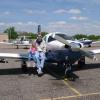
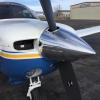











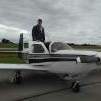

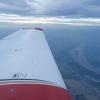
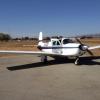
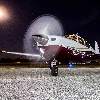



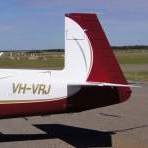
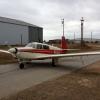



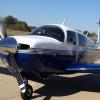

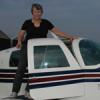
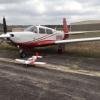



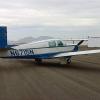

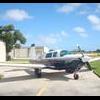

.thumb.png.7c67574d7b28f67b0b4a17760919b1ac.png)
